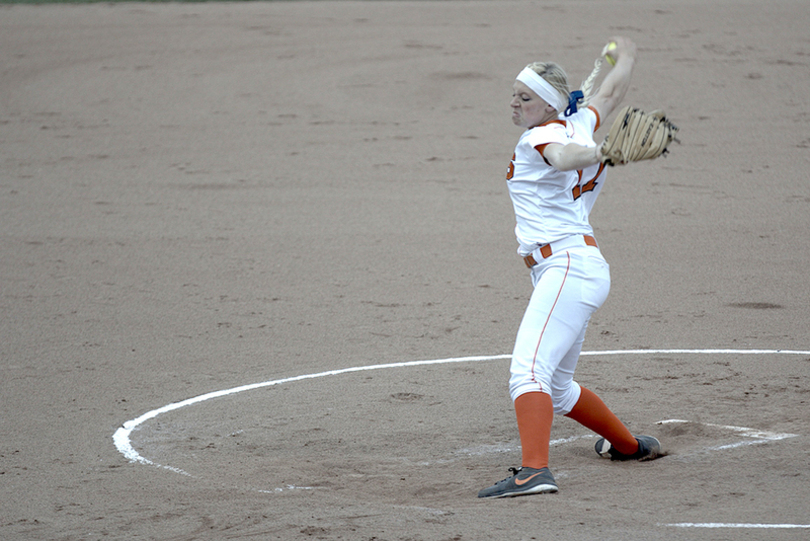Syracuse approaches bullpen usage with different philosphy

Sydney O'Hara used to start games but comes on now primarily as a reliever. She holds the SU record for saves with nine. Daily Orange File Photo
Sydney O’Hara is no longer the starting pitcher she once was. After starting nearly 70 percent of her 54 appearances as a freshman and sophomore, she has only thrown the first pitch for Syracuse twice in the past two seasons. Yet O’Hara recently got her name in the Syracuse softball history books.
On Feb. 17 against St. John’s, she became SU’s all-time leader in saves, with nine.
ICYMI: Sydney O'Hara (@SydneyyO11) became @CuseSB's All Time Saves leader this weekend! #TheCloser ? pic.twitter.com/BOopQ86jBG
— Kristyn Sandberg (@KSandberg23) February 20, 2017
“I have one job when I get into the game,” O’Hara said. “Whether we are up, or we are tied: Stop the bleeding. Make sure they don’t score.”
Syracuse (12-6) makes use of its crowded rotation by allowing pitchers to split games. This has increased save numbers and given an added importance to the role of a closer. Using relievers is all part of SU head coach Mike Bosch’s different philosophy.
“Softball has been predominately in the past where pitchers threw full games. They could throw seven innings, eight, nine, 10, 11,” Bosch said. “We’ve kind of taken a little bit of a baseball approach.”
O’Hara is first in the Atlantic Coast Conference in saves (4), games finished (12) and games in relief (12). With these numbers, she’s separated herself as the top relief pitcher on the Orange and someone that Bosch trusts to use at the end of games. She also posts a .182 opposing team batting average and a 1.12 earned run average. Those marks are good for second and third in the ACC, respectively.
But a relief role is not something that SU is limiting to one player. The team has expectations that all of the pitchers on the staff will be able to throw in relief at one point of the season.
“It’s just a matter of identifying who we are playing and what their strengths are,” Bosch said.
All five pitchers who have made appearances for the Orange this season have experience in relief, even if it was just for a few innings. This setup is to make use of the individual strengths of each of the pitchers in the rotation.
Abby Thibodeau, who has only made one appearance for the Orange, boasts a reliable changeup that many other pitchers on SU are still trying to perfect. AnnaMarie Gatti, who has started more games in the circle than any other player, relies on velocity to make outs, while Baylee Douglass’ movement remains her top priority when she’s in the circle. O’Hara said her “jerky” delivery is something that separates her from other Syracuse pitchers and Alexa Romero is one of only nine left-handed pitchers in the ACC. SU is attempting to make the interchangeability of the staff a strength that it can turn to in many different situations.
“Each one of us very different,” said Thibodeau. “We each have different strengths and different weaknesses and each one of them plays such an important role.”
SU believes the strength of the team is the ability to attack the opposing lineup with a variety of arms. Using multiple pitchers in a game throws off teams, rather than allowing them to adjust as the game progresses. Bosch sees this as extremely important, especially as scouting reports become more detailed and hitters become less surprised.
Saves numbers and the role of relief pitchers is something that will rise in the future, Bosch believes, not just for SU but in the game of softball. He expresses optimism about his team’s ability to adapt to a game that he thinks is changing.
“Any time you have more arms it’s a good thing,” Bosch said. “Ideally, if I have a pitching staff, if I have a down ball pitcher, an up ball pitcher, somebody who is left-handed and somebody who spins it all the time, I think I’m in good shape.”




